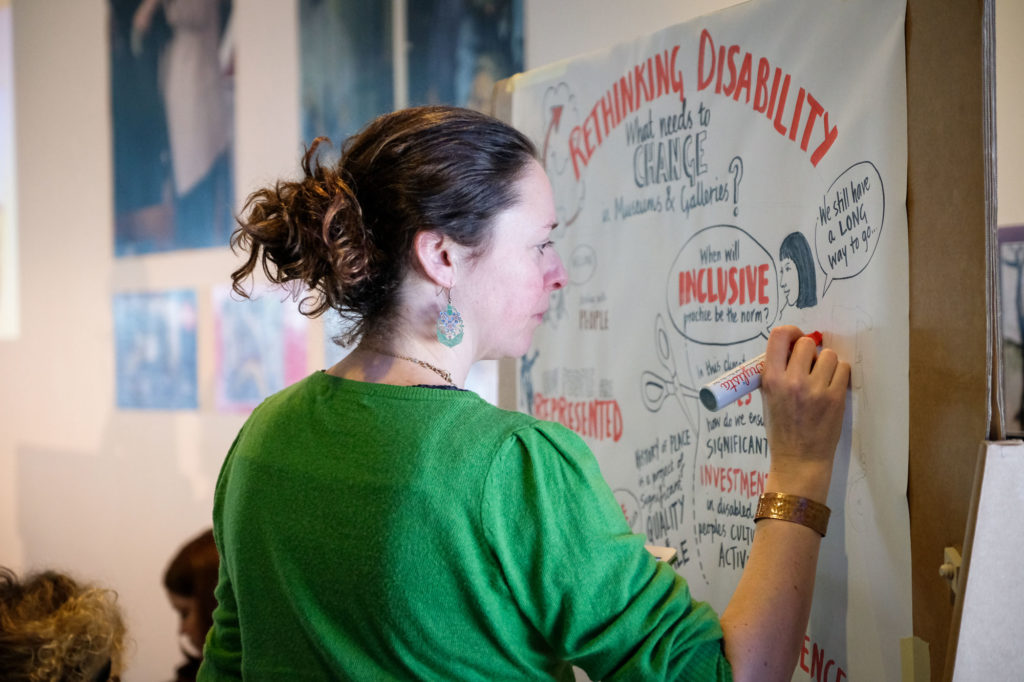I’m Jess Starns one of the Heritage Hub Members for History of Place. I’ve been supporting History of Place for just over a year. I have advised on certain aspects of the project such as accessibility for the exhibitions and promoting the work on social media. I have a strong interest in museums and how they can support social change. I am currently doing an MA Inclusive Arts Practice. I will be researching into what is important for interpretation and curation while telling the history of classifying people with learning difficulties.
I liked it that the audio was presented by actors who are using storytelling to explain the history and the museum displays.
I’ve visited all three of the History of Place exhibitions and attended the Bristol and Liverpool symposiums. In all three exhibitions I liked the audio and the hand held audio device, a bit like an old fashioned telephone receiver. I liked it that the audio was presented by actors who are using storytelling to explain the history and the museum displays.
At the Bristol symposium I enjoyed the Openstorytellers performance ‘The fortunes and misfortunes of Fanny Fust’ which linked nicely to the next talk by Dr Sue Ledger who has been researching into finding ethical ways for people with learning disabilities to give consent and being able to donate their personal stories to museum collections.
It was my first trip to Liverpool and to the Museum of Liverpool; the staff at the museum were very welcoming. I enjoyed Jocelyn Dodd’s talk on ten years after the University of Leicester’s ‘Rethinking Disability Representation project and report’. Barry Ginley who is the access officer at the V&A Museum mentioned how it’s more risky not to have people with disabilities represented within museum displays and that we should be more ambitious in making sure people are represented.
I would like to have heard more discussion on how we can make the sector more accessible for people with disabilities to contribute and work in museums and galleries. It was great to meet other colleagues in the sector with similar interests and passions. I hope that the research and exploration through History of Place will be used and taken forward as best practice in other museums; good accessibility doesn’t need to be non-aesthetically pleasing.









